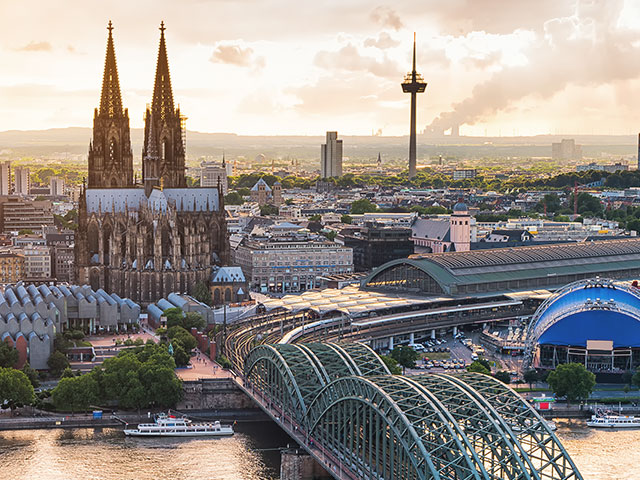How do I arrive to Appennino Tosco-Emiliano National Park?
The National Park can be easily reached from both Tuscany and Emilia-Romagna because it's located among them.
- Train: one of the most important towns is Pontremoli, that can be arrived from Villafranca-Bagnone (aprox. 10 minutes), La Spezia (aprox. 45 minutes), Sarzana (aprox. 55 minutes), Carrara (aprox. 1 hour), Massa (aprox. 1 hour 15 minutes), Parma (aprox. 1 hour 20 minutes). Castelnuovo de Garfagnana can be reached from Barga-Gallicano (aprox. 15 minutes), Aulla Lunigiana (aprox. 50 minutes), Lucca (aprox. 1 hour 5 minutes) or Pisa (aprox. 1 hour 30 minutes).
- Bus: there are some from the main towns to the main sightseeing places in the national park.
- Car: in case having a car Pontremoli can be arrived from Villafranca in Lunigiana (aprox. 15 minutes), Sarzana (aprox. 30 minutes), La Spezia (aprox. 35 minutes), Comano and Fivizzano (aprox. 40 minutes), Carrara and Massa (aprox. 50 minutes), Corniglio (aprox. 1 hour 5 minutes), Parma (aprox. 1 hour 10 minutes) and Castelnuovo di Garfagnana (aprox. 1 hour 40 minutes). Castelnuovo de Garfagnana can be reached from Barga (aprox. 15 minutes), Aulla Lunigiana (aprox. 50 minutes), Lucca (aprox. 55 minutes), Montecatini Terme (aprox. 1 hour 5 minutes), Pisa (aprox. 1 hour 10 minutes) or Pistoia (aprox. 1 hour 15 minutes). Castelnovo ne' Monti can be arrived from Cervarezza Terme (aprox. 15 minutes), Sassuolo (aprox. 50 minutes), Monchio delle Corti and Reggio Emilia (aprox. 55 minutes), Modena (aprox. 1 hour 10 minutes) or Parma and Corniglio (aprox. 1 hour 15 minutes).
Once
in the Park the best ways to move around the park are the car, bike or simply hiking.
History
Ligurians were the first people to settle in the region because they were shepherds that lived off the mountainous terrain. In 187 BC the Romans were able to conquer the land between Parma and Lucca and it was already a pivotal region due to its location between the sea and Po Valley (making it easier to be connected to the rest of Europe and their empire) and formed the Port of Luni. The collapse of the ancient Romans sparked the age of diminishing populations, invasion and spiritual pilgrimages (existing Roman roads became passageways for pilgrims to Rome or Jerusalem, specially Via Francigena). During the reign of Matilde of Canossa the present-day territories of the Park became the heart of her kingdom (she ruled from 1076 to 1115 over the Lombardy, Emilia-Romagna and Tuscany regions), building castles, churches and hostels for travelers. Italy's territories were very unstable from the 12th to 19th centuries because most of rulers wanted to control the roads to Rome. As a result, the land was split in several small duchys and fiefs, whose rulers could abruptly change from one year to another. When Italy became unified (1861), the region of the Park was under one country for the first time in centuries but population started to grow and poverty expanded, with many families forced to flee in search of a better life. In the first part of WW2 its mountains provided cover and became a safe place for the Italian people to flee but in 1943, the establishment of a German defensive line (the Gothic Line) divided the Park and Italy into two sides, resulting in a two-year civil war where the resistance of Nazi Germany and Italian Social Republic fought the Allied forces and Partisans. After the war the people living here emigrated to larger cities such as Parma, Milan and Rome. Villages and lands were abandoned as there was nothing left for the people to live on. The Park was granted the title of a national park in 2001 because of its location in the Apennine Mountains, the diverse wildlife that resides and the unique history and culture that remains in this area and in 2015 it was awarded the recognition of being a MaB UNESCO site.
 Montalcino is
a 5,920 inhabitants town not far from Monte Amiata, in the southern part of Tuscany, Italy.
It's part of the province of Siena and it's the largest city in Val d'Orcia, a UNESCO World Heritage area because of its beautiful and picturesque towns, its landscapes and one of the most famouse Italian wines, brunello di Montalcino.
Montalcino is
a 5,920 inhabitants town not far from Monte Amiata, in the southern part of Tuscany, Italy.
It's part of the province of Siena and it's the largest city in Val d'Orcia, a UNESCO World Heritage area because of its beautiful and picturesque towns, its landscapes and one of the most famouse Italian wines, brunello di Montalcino.












 09:25
09:25
 Banknotemaniac
Banknotemaniac
 Posted in:
Posted in: 




















